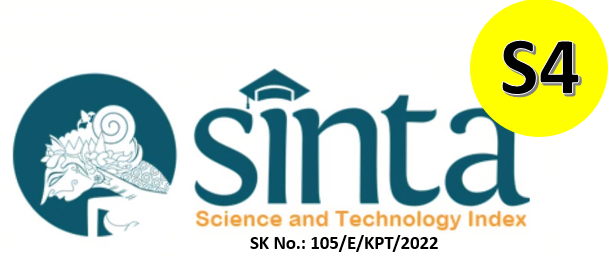Analisis Vegetasi di Kawasan Petilasan Mbah Maridjan Taman Nasonal Gunung Merapi
DOI:
https://doi.org/10.29080/biotropic.2020.4.1.55-63Keywords:
Vegetation Analysis, Taman Nasional Gunung MerapiAbstract
This research aims to determine the diversity of habitus and species that dominate in the region of Kinahrejo, Umbulharjo, Cangkringan, Sleman. The method used is square sampling by making a 7x7 meters square plot of 2 plots so that an area of 98 m2 is obtained. Vegetation analysis using the method of observation, and monitoring (field observation) directly with random sampling and using the principle of representative. Analysis the level of habitat diversity using the Shannon-wienner Index and determination of species that dominate using the calculation of the Important Value Index (INP). A total of 34 species consisting of mosses, shrubs, herbs, and stand-structure are occupy the observation area. The results of the research and analysis showed that Tamarindus indica, which included stand-structure habitus had the highest INP of 139.54% and the lowest INP was found in shrubs habitus. The highest Shannon-wienner index in shrubs habitus is 1.220928 and the lowest is in stand-structure habitus. It can be concluded, stand-structure habitus dominates the area while, the highest diversity is found in shurbs habitus. The eruption in 2010 caused damage to ecosystems and invasive plants to become dominant such as Acacia decurrens and shrubs.
Downloads
References
Afrianto, WF., Hikmat, A., Widyatmoko, D., Studi, P., Biodiversitas, K., Dramaga, K., No, HJ. 2016. Komunitas
Floristik dan Suksesi Vegetasi Setelah Erupsi 2010 di Gunung Merapi Jawa Tengah ( Floristic Community and Vegetation Succession after the 2010 Eruption of Mount Merapi Central Jawa ). Jurnal Biologi Indonesia, 12(2), 265–276. https://doi.org/https://doi.org/10.14203/jbi.v12i2.2895
Cepeda, G. N., Lisangan, M. M., Roreng, M. K., Permatasari, E. I., Manalu, D. C., & Tanlain, W. (2019). Aktivitas Penangkalan Radikal Bebas dan Kemampuan Reduksi Ekstrak Kulit Kayu Akway (Drimys piperita Hook. f.). Jurnal Aplikasi Teknologi Pangan, 7(4), 168–173. https://doi.org/10.17728/jatp.3239
Destaranti, N., Sulistyani, S., & Yani, E. (2017). Struktur Dan Vegetasi Tumbuhan Bawah Pada Tegakan Pinus Di Rph Kalirajut Dan Rph Baturraden Banyumas. Scripta Biologica, 4(3), 155. https://doi.org/10.20884/1.sb.2017.4.3.407
Ermawan, R. U. D. I. H., Ikmat, A. G. U. S. H., & Artono, A. G. U. S. P. K. (2016). ANALISIS FAKTOR EKOLOGI TUMBUHAN LANGKA ROTAN BEULA Ceratolobus glaucescens Blume DI CAGAR ALAM SUKAWAYANA SUKABUMI JAWA BARAT. Media Konservasi, 17(2), 94–110. https://doi.org/10.29243/medkon.17.2.%p
Marpaung, M. (2016). Analisis Vegetasi Tumbuhan Invasif di Kawasan Cagar Alam Lembah Anai, Sumatera Barat. Proceeding Biology Education Conference, 13(1), 2528–5742.
Munawwaroh, A. (2016). WONOSALAM JOMBANG PENDAHULUAN Hutan merupakan masyarakat tumbuh-tumbuhan yang dikuasai oleh pohon-pohon yang menempati suatu tempat dimana terdapat hubungan timbal balik antara tumbuhan tersebut dengan lingkunganya . Pepohonan yang tinggi sebagai komponen. Pedagogia, 5(1), 103–110.
Natalia, D., & Handayani, T. (2013). Analisis Vegetasi Strata Semak Di Plawangan Taman Nasional Gunung
Merapi Pasca Erupsi Merapi 2010. Jurnal Bioedukatika, 1(1), 62. https://doi.org/10.26555/bioedukatika.v1i1.4095
Setiawan, E. (2018). Keragaman Populasi Pohon Asam (Tamarindus indica L.) di Jalan Raya Socah-Arosbaya, Kabupaten Bangkalan dan Strategi Konservasi. Rekayasa, 11(2), 95. https://doi.org/10.21107/rekayasa.v11i2.4446
Subiantoro, A. W., & Handziko, R. C. (2011). Erupsi Merapi Dan Potensi Pengembangan Bahan Ajar Biologi Berbasis Representasi. Seminar Nasional Biologi VIII, Prodi Pend. Biologi FKIP UNS, Tema: ”Biologi, Sains, Lingkungan, Dan Pembelajarannya Menuju Pembangunan Karakter”, Tanggal 16 Juli 2011. ISBN: 978-979-1533-23-2, 978–979.
Surono, Jousset, P., Pallister, J., Boichu, M., Buongiorno, M. F., Budisantoso, A., … Lavigne, F. (2012). The 2010 explosive eruption of Java’s Merapi volcano-A “100-year” event. Journal of Volcanology and Geothermal Research. https://doi.org/10.1016/j.jvolgeores.2012.06.018
Sutomo, S., & Fardila, D. (2013). Floristic Composition of Groundcover Vegetation after the 2010 Pyroclastic Fire on Mount Merapi. Jurnal Manajemen Hutan Tropika (Journal of Tropical Forest Management). https://doi.org/10.7226/jtfm.19.2.85
Wismaya, Y. G., Anjasmara, I. M., & Sulistiyani, S. (2016). Analisis Deformasi Gunung Merapi Berdasarkan Data Pengamatan GPS Februari- Juli 2015. Jurnal Teknik ITS. https://doi.org/10.12962/j23373539.v5i2.17226
Zefry Arqino Ginting, Togar Renando Manurung, L. S. (2017). Analisis vegetasi pada kawasan hutan desa di desa nanga yen kecamatan hulu gurung kabupaten kapuas hulu. 5(3), 714–720.
Zulkarnain, Kasim, S., & Hamid, H. (2015). Analisis Vegetasi Dan Visualisasi Struktur Vegetasi Hutan Kota Baruga, Kota Kendari. Hutan Tropis.













